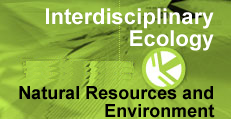I am fortunate to have had these wonderful opportunities of interesting
development work and research projects with extraordinary people.
Following are some team works in which I have participated.
Together with Dr. Peter E. Hildebrand and Dr. Jim W. Jones we
have produced a manuscript entitled
Modeling the Effect of Household Composition on the Welfare of
Limited-Resource Farmers in the Coastal Cañete Valley,
Peru. This manuscript is accepted for publictaion by the Agricultural
Systems Journal.
Working in north Florida under the Florida Consortium: University
of Miami - Florida State University - University of Florida, funded
by NOAA, with Dr. Norman E. Breuer, Dr. Peter E. Hildebrand, and
Dr. Jim Jones, we have produced the paper entitled Potential
Response of north central Florida Livestock Producers to Long-Term
Climate Forecasting that is currently in reviewing process
by the Climatic
Change . A presentation
was prepared for the Plata
Basin Initiative 2002 Workshop of the American Associaion
for the Advancement of Science.
Current working in progress with Dr. Norman E. Breuer, Dr. Peter
E. Hildebrand, and Dr. Amy Sullivan is the article Modeling
Diverse Livelihood Strategies in Peasant Livelihood Systems Using
Ethnographic Linear Programming, which is a systematization
of several years of work and experience with linear programming
worldwide.
Also, working in progress is the paper Assessing
Socioeconomic Resilience of Rural Workers in an Ecuadorian Agro-socio-eco-system
using Ethnographic Linear Programming with Dr. Norman E. Breuer
and Dr. Peter E. Hildebrand.
Working as a consultant of the Inter-American
Development Bank (IDB), associated with the Valle
Grande Rural Institute in Cañete, we produced the first
and unique (in Peru) Geographic Information System of the Cañete
Valley in agreement
with the Agricultural Ministry. I am proud to know that the
founded Information
Systems Office from Valle Grande is still actively working
in the Cañete community. This GIS identifies each and every
one of the 4,800 farms in Cañete and contains more than
20 layers of information.
In order to develop a serious development and extension work
in the Cañete community, we did A
Profound Diagnostic Research that included 100% of the target
public of the Valle Grande Rural Institute (600 farmers). A comprehensive
survey was undertaken and the information collected was indexed
in a database. The Valle Grande Database is now a routine-used
working tool. It connects socio-economic, demographic, productive,
environmental, and political information for each one of the family-farms.
The database requires periodic updates and allows the user to
make intelligent queries to retreive information in a fast and
efficient manner.




